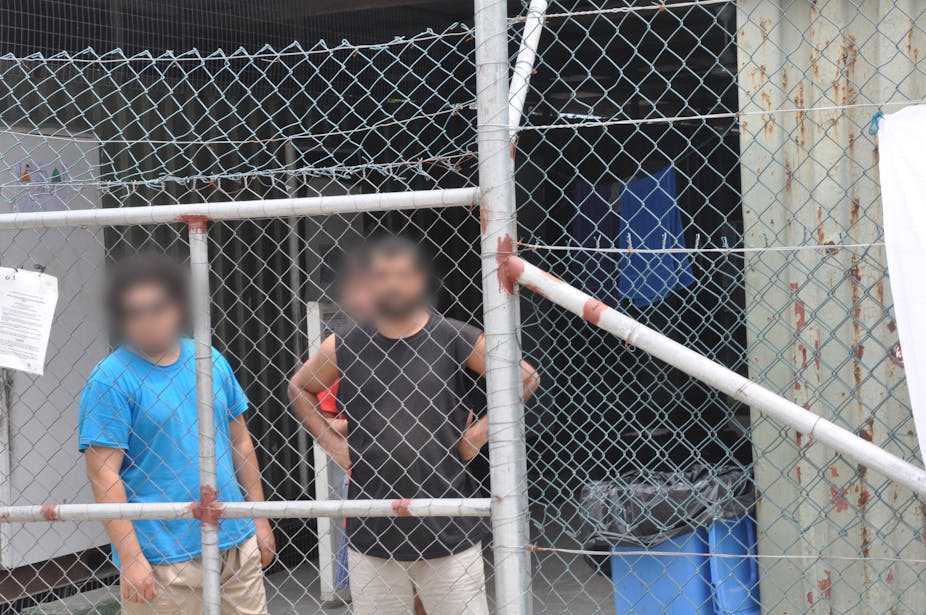At the ALP national conference in July, Opposition Leader Bill Shorten unveiled a suite of measures on asylum seeker policy. This included some that addressed the protection needs of asylum seekers and refugees, such as:
improving conditions for asylum seekers in offshore detention;
fast-tracking offshore asylum claims;
-
improving procedural safeguards for processing onshore asylum claims; and
making a substantial contribution to reducing the regional and international refugee burden by doubling Australia’s annual humanitarian intake.
Shorten won an internal battle against the ALP’s Left faction to leave open the option of turning back asylum seeker boats if Labor wins government. So, are there any differences left between Labor’s asylum policies and the Coalition’s?
What has the Abbott government done?
The respective parties’ national platforms differ in their content on refugee policy. The Liberal Party platform has one reference to refugees:
… provide international aid and assistance, including a safe haven for refugees, within the limits of our national resources.
In contrast, the ALP platform has seven pages stating its position on refugees, asylum seekers (which the platform provides are not to be called “illegals”) and migrants.
The Liberal Party’s sole paragraph does not reflect the full range of legislation and policy that it has introduced since winning government in 2013. In addition to retaining then-prime minister Kevin Rudd’s July 2013 announcement of no resettlement in Australia for asylum seekers who arrive by boat, the Coalition government has introduced a range of measures concerning both offshore refugees and onshore asylum seekers, including:
a reduction in the annual humanitarian intake that Julia Gillard adopted on the recommendation of the Expert Panel on Asylum Seekers;
the introduction of boat turnbacks in international waters under Operation Sovereign Borders; and
restrictions on family reunion for onshore and “unauthorised maritime arrivals” (asylum seekers who arrive by boat).
There are also allegations that Australian officials paid people smugglers on intercepted boats to return their “human cargo” to Indonesian waters, though the government refused to confirm or deny this.
So what are the differences?
Both Labor and the Coalition will permit turn-backs and tow-backs of unauthorised maritime arrivals. Both will continue to direct those who manage to enter Australian waters to offshore processing.
One difference appears to be the conditions of detention for arrivals in offshore detention under a Labor government. Although Labor has said it will not provide resettlement, it appears to have agreed to provisions to ensure that treatment will be more humane. It will provide an independent advocate for children in detention and require the mandatory reporting of abuse.
Labor would increase co-operation with the UN High Commissioner for Refugees (UNHCR) on the resettlement of asylum seekers found to be refugees. It would provide more assistance to countries of “first asylum” – such as Malaysia, Thailand and Indonesia – if they agree to resettle people the UNHCR determines to be refugees.
There appears to be an expectation by both parties that transit countries such as Indonesia will continue to co-operate with boat turn-backs. However, Labor is placing an emphasis on regional co-operation and burden sharing. Shorten referred to a renewed commitment to regional co-operation, with specific reference to strengthening the 2011 Regional Refugee Framework that had been developed under the Bali Process.
Labor also said that its aim of increasing the humanitarian intake to 27,000 by 2025 was part of an effort to provide more options to refugees, reduce the need to rely on irregular maritime travel and encourage resettlement in countries of first asylum.
The Coalition government reduced the humanitarian programme from 20,000 resettlement places promised in 2012-13 to 13,750 places in 2014-15. Of these, 6000 were available for UNHCR-referred refugees.
There are some proposed differences in the onshore programme – that is, for those arriving on valid visas, often by plane, and then applying for protection onshore. For those found to be refugees, Labor said that it will remove temporary protection visas (TPVs). However, there is no further detail on what will happen to those presently on TPVs, those undergoing processing, or whether permanent residence would be granted in place of TPVs.
The ALP has also said that it would restore the Refugee Review Tribunal and reinstate references to the UN Refugee Convention in the Migration Act. The Labor platform also proposes a 90-day rule for processing onshore protection visa applications.
Overall, Labor’s proposals would result in measures that would improve procedural and processing safeguards under the onshore programme. But, like the Coalition government, it would retain the offshore processing framework and the option of boat turn-backs.
Relating to the continuation of offshore processing, Labor said it will commit to deeper regional co-operation on a refugee humanitarian intake scheme. It will increase the annual intake under Australia’s humanitarian programme to address the regional need for more resettlement places.
The policy of boat turn-backs and tow-backs, now supported by both main political parties, does not meet Australia’s obligations under international law. The action is dangerous to all involved.
Placing Australia in a global context, it is worth noting that in 2015, with 137,000 refugees crossing the Mediterranean Sea between January and June, the European Union opted not to proceed with a boat turn-back or tow-back policy.

